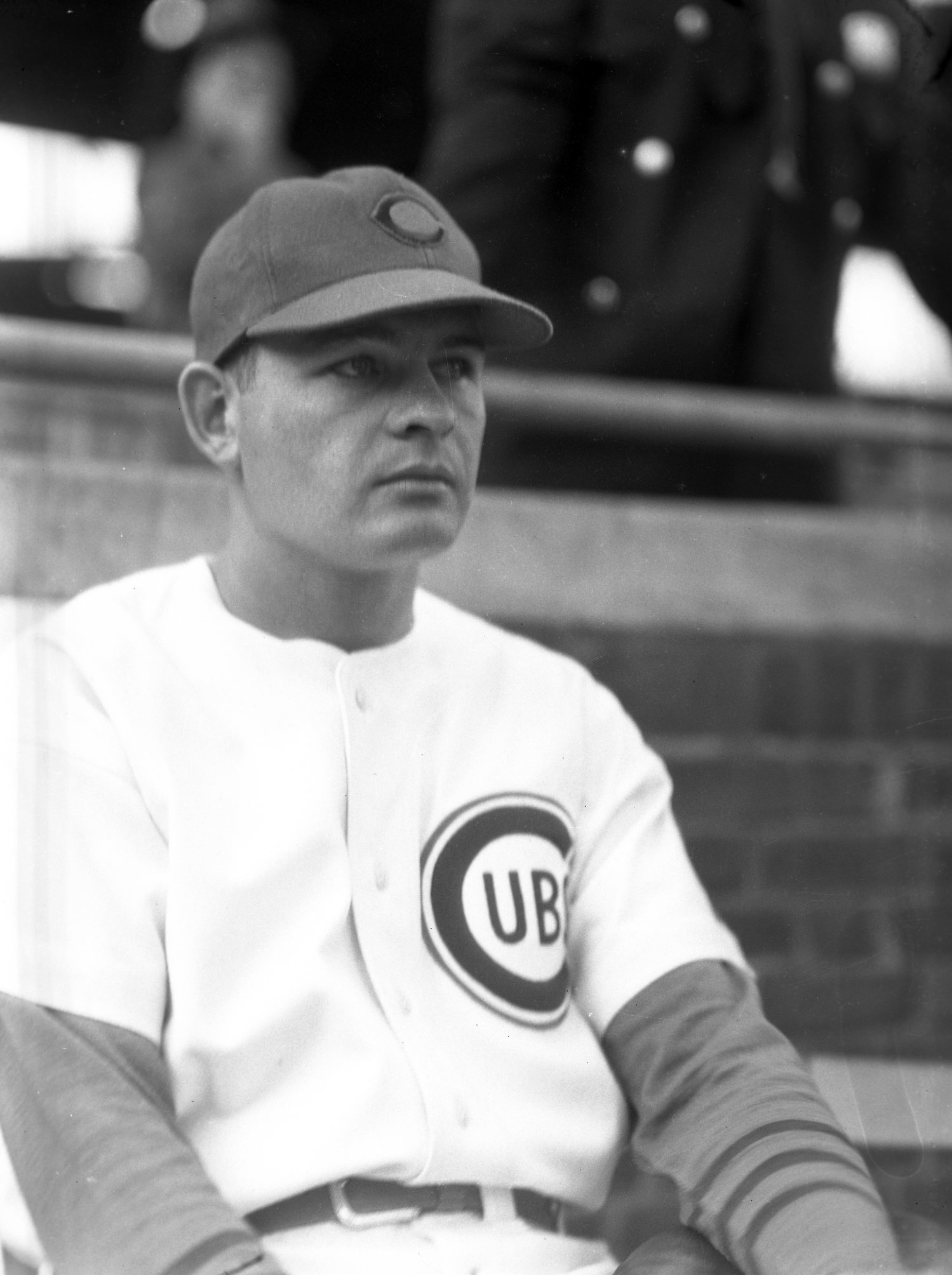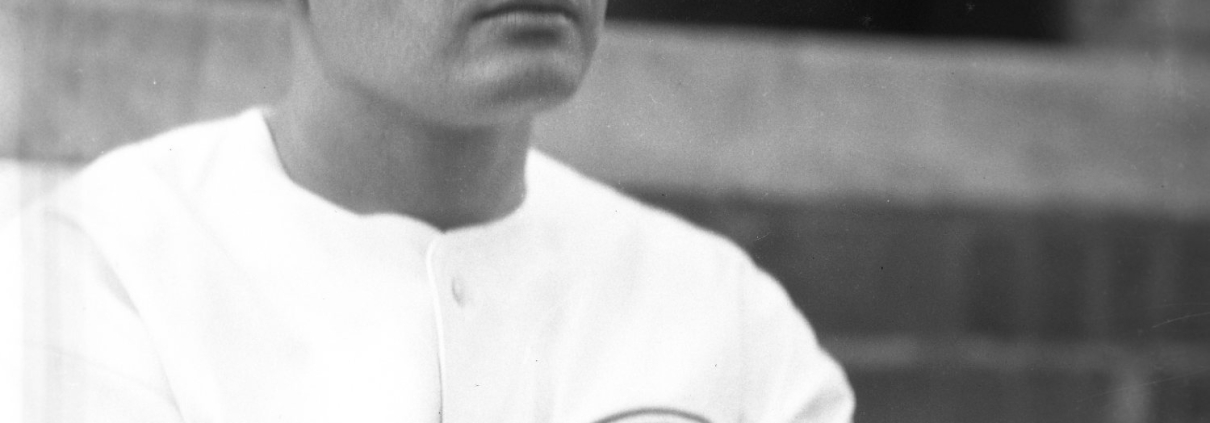September 11, 1942: Paul Gillespie cheers war-weary Cubs fans by hitting home run in first at-bat
 September 11, 1942: While World War II had not reached the United States mainland, fear and trepidation were spreading throughout America as more sons and fathers – mothers and daughters – left to join the military. Already growing weary of the daily updates about the war, on this September morning America woke up to headlines announcing “F.D.R. Plans U.S. Mileage, Gas Curbs.”1
September 11, 1942: While World War II had not reached the United States mainland, fear and trepidation were spreading throughout America as more sons and fathers – mothers and daughters – left to join the military. Already growing weary of the daily updates about the war, on this September morning America woke up to headlines announcing “F.D.R. Plans U.S. Mileage, Gas Curbs.”1
There were few ways to escape the apprehension as war casualties continued to increase overseas, while at home, food was becoming scarce, and gas was about to be rationed.
One way to escape, if only for a few hours, was baseball. In New York City, those looking for such a diversion could head to the Polo Grounds to watch the 76-61 New York Giants, led by future Hall of Fame player-manager Mel Ott, take on the 64-77 Chicago Cubs, led by manager Jimmie Wilson. Fans who could not make the trek to the game could listen to Red Barber on WHN radio. In Chicago, the Cubs’ faithful could listen to Pat Flanagan on WJJD, Jack Brickhouse on WGN, or Hal Totten on WCFL.2
Whether in person or over the airwaves, baseball fans would experience the debut of Chicago Cubs catcher Paul Gillespie. Gillespie joined four other Cubs in the starting lineup who had debuted during the 1942 season (Hi Bithorn, Chico Hernández, Cy Block, Marv Rickert). Willard Marshall was the only rookie in the Giants’ lineup that afternoon.
By early afternoon, the weather was clear and the temperature had climbed to 80 degrees.3 Enjoying the warm sunshine, 3,719 ladies day fans prepared to watch what they hoped would be another Giants victory.4
Bithorn (8-12, 3.94), the first Puerto Rican player in the major leagues, was “honored in pre-game ceremonies at home plate.”5 He then took the mound for the Cubs while the Giants countered with right-hander Harry Feldman (6-1, 3.15).
Despite each team getting two hits in the first inning, the game remained scoreless. Future Hall of Famer Jimmie Foxx led off the second inning for the Cubs by striking out. Next up, Gillespie, hitting left-handed, came to bat for the first time in his major-league career and gave the Cubs the lead with a home run drive into the right-field lower deck.
Throughout the game, Bithorn was constantly in trouble, giving up two or more baserunners in every inning except the fourth. In the bottom of the third inning, Bithorn relinquished the lead Gillespie gave the Cubs when Dick Bartell doubled and scored on a Johnny Mize groundball fielder’s choice to tie the game, 1-1.
The score remained tied through the fifth inning as Feldman held the Cubs to just one hit after the Gillespie home run. In the top of the sixth, Gillespie gave the Cubs the lead again with a hard-hit single to deep right field, scoring Lou Novikoff, who had singled and gone to second on a walk to Foxx. In the seventh, Lennie Merullo added to Chicago’s lead with a single to center field, scoring Lou Stringer, who had walked and taken second on Bithorn’s sacrifice.
After giving up eight hits and six walks through the first seven innings, Bithorn started the bottom of the eighth leading 3-1. Four singles later (by Gus Mancuso, Babe Barna, Bartell, and Mickey Witek, who hit a two-run single), the Giants had tied the score.
With Feldman out of the game, the ninth inning began with Ace Adams on the mound for a National League-record 57th time. (The prior mark of 56 games in one season was shared by Christy Mathewson and Hugh Mulcahy.)6 Adams worked through the ninth inning without any trouble.
But trouble awaited Bithorn. So far none of the six Giants he walked had gone on to score. His good fortune changed in the ninth. Mize opened the inning with a walk. After two groundouts and two intentional walks, power hitter Hank Leiber came to the plate. With the bases loaded, Leiber took three wide pitches and a called strike, then fouled off two pitches. With a 3-and-2 count, Leiber “wrinkled his nose at the last pitch to win the game in a walk on Ump Dunn’s ‘ball four!’”7 Mize scored, giving Adams his seventh win of the season and Bithorn his 13th loss.
While the Giants recorded 12 hits and 10 walks in the game and the Cubs tallied seven hits and five walks, only seven runs were scored between the two teams. New York fans went home happy with the Giants’ 4-3 win. But according to New York Daily News columnist Hy Turkin, “Silent stuff was the order of the day at the Polo Grounds. The Ladies’ Day assemblage of 3,719 kept mum except when the Dodger-Card innings were posted.”8 Adams would finish the 1942 season with a new National League record of 61 game appearances. He established the major-league record in 1943 with 70 appearances. (In 1974, Mike Marshall, Brooklyn Dodgers, set the current record at 106 games.)9
On September 13, Gillespie played in his second major-league game and followed his first at-bat home run with another one, a two-run homer in Boston off the Braves’ Tom Earley in a game the Cubs lost 11-6.
After the season, Gillespie was due to report to the Coast Guard.10
World War II eventually took a toll on both teams’ rosters. Four Cubs from the September 11 lineup (Gillespie, Marv Rickert, Cy Block, and Lou Stringer) reported to the military prior to the 1943 season. Bithorn reported before the 1944 season. The Giants also had four players from the September 11 game report to military service (Johnny Mize, Babe Young, Hal Schumacher, and Willard Marshall) prior to the 1943 season. Dick Bartell and Mickey Witek reported before the 1944 season. The Giants also lost Hank Leiber via a deferment for essential occupations. Leiber left to raise chickens in Arizona.11 He did not return to baseball.
As for Gillespie, in an ironic twist, he not only hit a home run in his first major-league at-bat, but he also hit a home run in his last major-league regular-season at-bat.12
Sources
In addition to the sources cited in the Notes, the author consulted Baseball-Reference.com.
https://www.baseball-reference.com/boxes/NY1/NY1194209110.shtml
https://www.retrosheet.org/boxesetc/1942/B09110NY11942.htm
Photo credit: Paul Gillespie, courtesy of Chicago Cubs Archives.
Notes
1 “F.D.R. Plans U.S. Mileage, Gas Curbs,” New York Daily News, September 11, 1942: 1.
2 “Voices of Summer: The Cubs on Radio,” https://chicagosportsmemories.blogspot.com › 2011 › 02 › voices-of-summer-cubs-on-radio.html, February 4, 2011.
3 “The Journal’s Journal,” Ithaca (New York) Journal, September 11, 1942: 4.
4 Baseball Reference and the Chicago Tribune stated the attendance was 1,704 while the New York Daily News said it was 3,719. See also Hy Turkin, “Giants Win in Ninth, 4-3,” New York Daily News, September 12, 1942: 25.
5 Turkin.
6 “Cubs Lose, 4-3; Bithorn Walks in Winning Run,” Chicago Tribune, September 12, 1942: 19.
7 Turkin.
8 Turkin.
9 https://www.baseball-almanac.com/pitching/pigamp3.shtml.
10 Turkin.
11 Bob Mayer, “The New York Giants in Wartime,” in Marc Z Aaron and Bill Nowlin, eds., Who’s on First? Replacement Players in World War II (Phoenix: Society for American Baseball Research, 2015).
12 His sixth and final major-league home run was hit on September 29, 1945, during a 5-0 Cubs win over the Pittsburgh Pirates at Forbes Field.
Additional Stats
New York Giants 4
Chicago Cubs 3
Polo Grounds
New York, NY
Box Score + PBP:
Corrections? Additions?
If you can help us improve this game story, contact us.


